If you are considering keeping a pet Capybara in your home, it is crucial to know the legal requirements in your state or area. This post shows you the US States that allow you to own or keep Capybaras in your residence.
Allow me to brief you on this animal called “Capybara”.
Capybara is the largest rodent in the world, and also, it’s a semiaquatic mammal. You can find capybaras along the edge of the water throughout the regions of Central America and South America. Owing to where this animal, capybara, is found — they are not exposed to danger. In some areas, a few are hunted for leather and meat hence the decline in their population.
In addition, capybaras are labeled as social creatures, as they have partially webbed eyes and feet. Not just do they have such eyes and feet, but they also have webbed nostrils and ears on the top of their heads. This makes them comfortably survive in their wetland habitat.
Now, back to the question.
I’m certain you are among the set of people asking, “Where Is It Legal To Own A Capybara Pet In the USA?”. If you are yet to find a satisfying answer, you are about to hear it.
Unarguably, it is illegal to own or keep capybaras as pets in certain states. Capybaras are illegal in the following areas:
- Alaska.
- California.
- Colorado.
- Connecticut.
- Georgia.
- Illinois.
- Massachusetts.
- Oregon.
- Vermont.
Furthermore, they are illegal in Washington, D.C., but rabbits and other domesticated rodents are permitted. Nonetheless, several US States permit residents to keep capybaras as pets. It is legal to own pet capybaras in these states:
- Alabama.
- Arizona.
- Arkansas.
- Delaware.
- Florida.
- Hawaii.
- Idaho.
- Indiana.
- Iowa.
- Kansas.
- Kentucky.
- Louisiana.
- Maine.
- Maryland.
- Michigan.
- Minnesota.
- Mississippi.
- Missouri.
- Montana.
- Nebraska.
- Nevada.
- New Hampshire.
- New Jersey.
- New Mexico.
- New York.
- North Carolina.
- North Dakota.
- Ohio.
- Oklahoma.
- Pennsylvania.
- Rhode Island.
- South Carolina.
- South Dakota.
- Tennessee.
- Texas.
- Utah.
- Virginia.
- Washington.
- West Virginia.
- Wisconsin.
- Wyoming.
While it is legal to own capybaras as pets in these states, you may obtain a permit or license to own a Capybara. If you reside in Florida, for instance, you must get a Class III permit from the office of the Florida Fish and Wildlife Conservation Commission to keep a pet Capybara in your home. So ensure you check your local legislation or consult your region’s authorities to know if a special permit would be needed.
Aside from the legal formalities, don’t hesitate to get the necessary information as regards keeping a capybara before adopting the pet. Since Capybaras are not accepted in some countries, it’d be wise to see their behavior.
Are Capybaras Friendly?
Just as we’ve stayed in some of our previous articles, capybaras are known to be friendly and social animals. Again, capybaras exhibit their social life in the midst of a group hence their love for moving in a group. It’s not recommended that you adopt just a single capybara.
Ensure that you adopt at least two, but it’d be better to adopt more than two. Some American capybaras may weigh at least 145 pounds and may be up to 1.25 meters (4 feet) long. Another breed, known as Panamanian capybara, is way smaller in terms of weight, and about 27kg.
Furthermore, these brownish rodents possess short hairs. Speaking of short hairs, they also have short “everything,” small ears, short legs, blunt snouts, and almost an absence of a tail. While they hang out along lakes and river banks, they portray shyness in the face of loneliness. That’s why they move into a group.
Usually, they feed in the morning and evening and spend almost all 24 hours in a day resting under cover along the banks. Also, one can say that capybaras are vegetarians. One con of having a capybara as a pet is if you reside around a cultivated area, they’re likely to act as pests by eating squash, grain, and melons.
RELATED POST: What Capybaras Need To Survive Anywhere
What States Can You Legally Buy a Capybara In The US?
In states such as Georgia and California, capybaras are banned as pets. Speaking of the states where it is legal to adopt or buy a capybara, they include Pennsylvania, New York, and Texas.
And for some regions, you need a certificate or permit to have this animal in your possession. Let’s see the reason why capybaras are illegal in the city of California.
Are Capybaras Illegal In California?
Capybaras are illegal to own in California. The reason for this is that they are seen as wild animals, and if they’re exposed to the wild, they could harm crops or native wildlife.
Have in mind that the capybara is a semi-aquatic animal, so if you desire to adopt a capybara, you must create a little pond in which the capybara can easily swim. The laws vary in each province or region; the laws of owning a Capybara in Oregon, Virginia, and Ohio may be different from that of Canada or the UK.
In other words, each region or state has its own legal requirements for pet ownership. Many pets that are illegal in California are legal in other states.
Are Capybaras Legal To Own In Florida?
Capybaras are legal in some parts of the United States and Florida. When it comes to owning exotic pets laws, Florida is regarded as an unusual state. The regulations in Florida involve good and bad aspects. You might require a permit to own a capybara in Florida.
QUICK GUIDE: Complete Beginner’s Guide To Grooming A Capybara As Pet
9 Incredible Facts You Should Know About Capybaras
Here is a rundown of some capybara facts no one told you about.
1. They Are Huge Guinea Pigs
Capybaras can go beyond 65kg in weight, 1.5 meters in length, and 60 centimeters in height to wither. Regardless of their large dimensions, they made their way to “the largest rodents in the world” amidst their closest relatives, which include:
• Guinea Pigs (Cavia porcellus)
• Rocky Carvies (Kerodon rupestris)
• Agoutis (Dasyproctidae Bonaparte)
• Chinchillas (Chinchilla)
2. They Are Semi-Aquatic Mammals
Capybaras can be found in habitats with ponds, swamps, rivers, and lakes. The presence of those makes a habitat favorable for capybaras. They spend almost all their time relaxing or eating grasses and aquatic plants. They have the capacity to consume up to 8kg every single day.
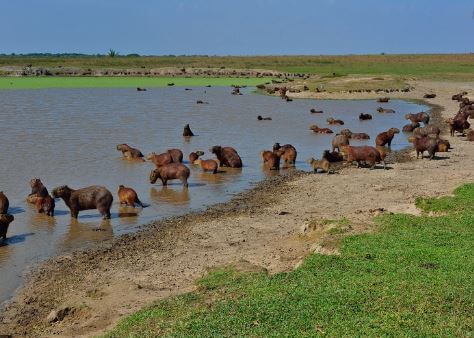
Capybaras are known for their swimming abilities. The reason they can easily swim is because of their webbed paws. Since the upper part of their head is where their eyes, ears, and naris are located, keeping their body underwater is an easy thing for them to do.
Capybaras can remain underwater for about 5 minutes — hiding from predators such as ocelots, pumas, and jaguars.
3. Their Teeth Never Stop Growing
Like other rodents, Capybaras have up to two robust and long incisors — which they use to reach aquatic plants, sugar cane, tubers, and barks. Surprisingly, their teeth can grow to over 8 centimeters and don’t stop growing.
Their teeth grow to fix whatever the constant use causes. Their molars grow incessantly throughout their lives, but they wear down owing to the capybaras’ constant grinding.
4. They Can Be Domestic Animals
Because of the gentle behavior of capybaras, people forget that they’re wild animals and adopt them as pets. Fortunately, Italy brought a stop to the possession of capybaras by privates in 1996. Capybaras can be helpful to humans; although they are seen as wild animals, they can be trained at home.
5. They Live In Groups
Capybaras are very social animals that love to walk and live in groups of about 10 to as many as 30 individuals. The groups are known for their stability, and they work hand-in-hand to defend their habitat. The females come together to raise their babies.
Young capybaras get their nursing from several different females and moms. Clearly, the herd keeps a watchful eye on those young capybaras — considering how susceptible they are to predators.
6. They Have Unique Vocalizations
When it comes to communication, capybaras communicate effectively with the members of their groups. The several sounds they make are distinctively unique — sounds to signal a move, indicate warning and be in the know of the location of their younger ones.

Their sounds include whining, crying, clicking, barking, whistling, squealing, and teeth-chattering. Each sound listed is unique to a specific meaning and completely different from their social group. The young capybaras are the most vocal; they emit sounds almost all the time.
7. They Eat Plants
Capybaras are classified under the vegetarian mammal species. These herbivores — capybaras, normally feed on aquatic plants, bark, fruits, and grasses. They feed according to the season [they eat a lot].
During the dry season, they add squash, melon, grains, and seeds to their diet. To avoid predators, capybaras prefer to eat at dawn or dusk.
8. They Eat Their Own Poop
Capybaras are animals among the auto-coprophagous family, meaning they eat their own excrete. They practice this every morning, and this culture provides them with the needed bacteria (bacteria flora), which is important for proper digestion.
Normally, it’s difficult for the grasses they eat to digest, so eating their poop creates a process that allows their body to absorb the fibrous meal eaten the previous day.
9. They Offer a Great Place To Sit
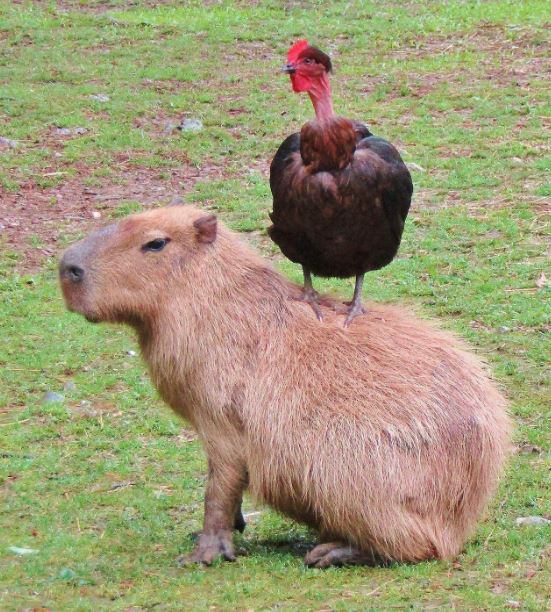
Sometimes, people refer to the name “nature’s ottoman.” Over the years, Capybaras have been a reputable animal as regards being an amazing spot to take a load off. They provide a cooling spot for other animals to sit on.
There’s a mutual relationship between capybaras and birds that feed on insects from the back of rodents — birds such as the yellow-headed caracara. The capybaras benefit immensely because these birds get rid of bugs.
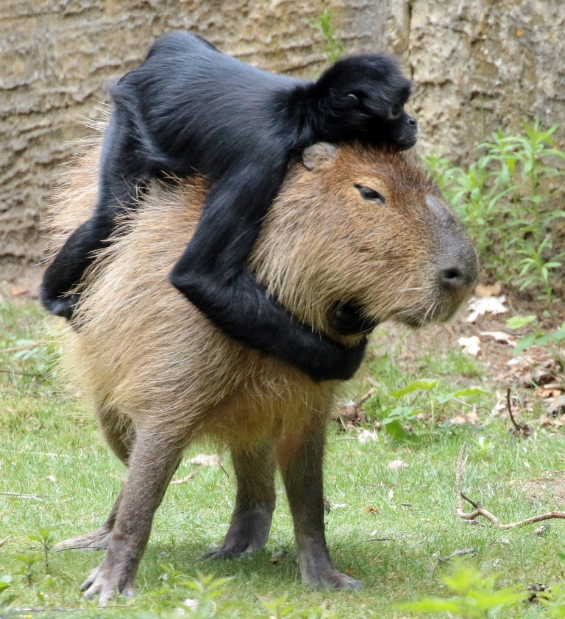
Conclusion
The next time someone asks you about the places where it is legal to own a capybara in the United States, you can also tell them or refer them to this article. We have covered this topic extensively and also outlined nine facts about capybaras.
If you are considering owning a capybara, these facts will greatly assist in your dealings with them. Capybaras are legal to own in States such as New York, Texas, and Pennsylvania but are illegal in California and Georgia.


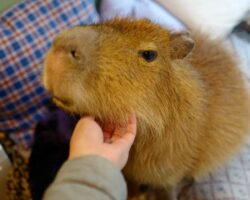

![Capybara Meat And Its Culinary Uses - [Every You Should Know] Capybara Meat & Culinary Uses](https://capybaratips.com/wp-content/uploads/2023/03/Capybara-meat-250x200.webp)

![Where Can I Buy a Capybara Near Me? - [Recommended] Where Can I Buy a Capybara Near Me](https://capybaratips.com/wp-content/uploads/2023/03/Near-Me-250x200.webp)

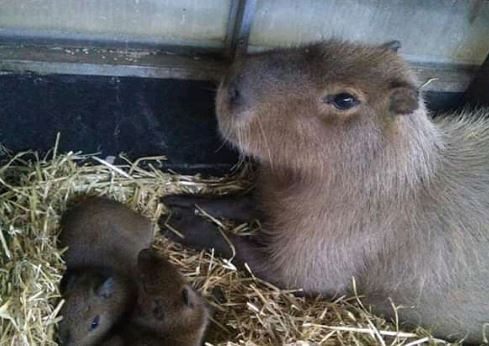

Hamburger cheeseburger big Mac whopper
big mac whopper big mac big mac